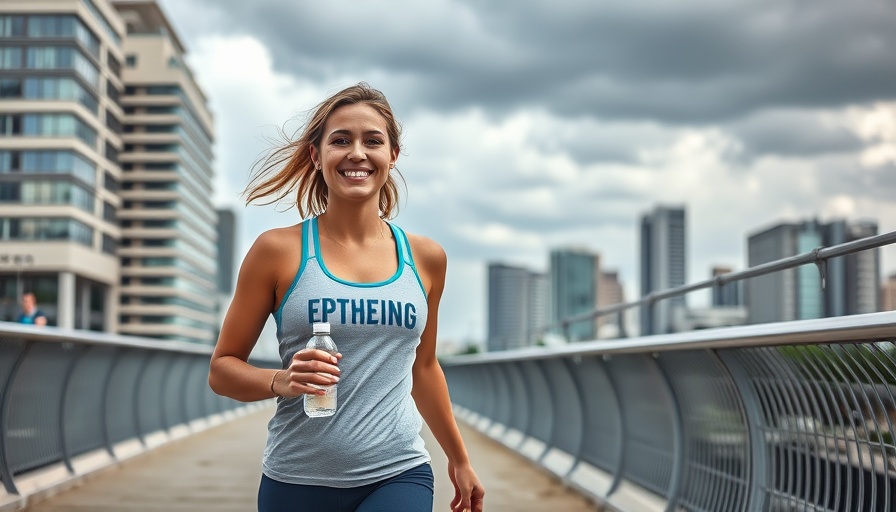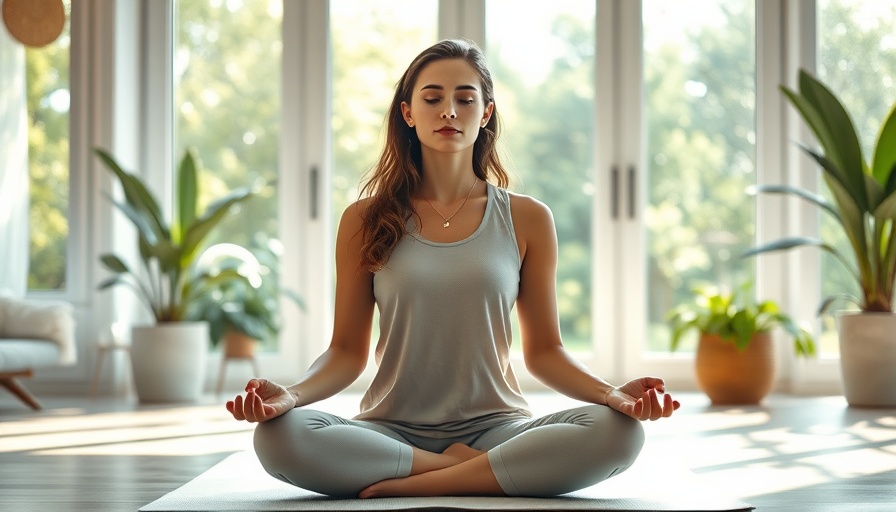
Understanding the Trend: What is Rucking?
Rucking, a unique form of exercise that blends cardio with strength training, is quickly gaining popularity among fitness enthusiasts. Essentially, rucking involves walking or hiking while carrying a weighted backpack or rucksack. Often associated with military training, its benefits extend beyond just physical endurance. Fitness expert Yash Agarwal explains, "The added resistance significantly enhances a regular walk, transforming it into a full-body workout." This method not only elevates your heart rate, but it also engages various muscle groups, which can lead to a more effective workout.
Unlocking the Benefits of Rucking
The growing trend of rucking comes with a multitude of benefits that can help achieve fitness goals, particularly for those aiming to lose belly fat. The powerful combination of cardiovascular exercise and resistance training equips rucking with transformative capabilities. Here’s how rucking can be a game changer in your fitness journey:
1. Increased Calorie Burn
Carrying extra weight while you walk can significantly elevate your calorie burn, making it a powerful tool for those looking to shed pounds. Studies, such as one published in the Journal of Clinical Medicine, indicate that rucking can burn more calories than traditional walking or jogging due to the additional weight. This calorie deficit is essential for fat loss, especially in stubborn areas like the belly.
2. Metabolic Boost
Rucking doesn’t just help in burning calories during your workout; it also stimulates muscle growth. According to research in the Military Muscle journal, increased resistance can lead to higher muscle mass, subsequently raising your resting metabolic rate. This means your body will continue to burn calories even after you’ve completed your workout, further aiding weight loss.
3. Building Core Strength
Another excellent advantage of rucking is its ability to strengthen your core. When rucking, the weight from the pack requires your body to engage various core muscles to maintain balance and proper posture. Over time, you’ll find that a stronger core translates to a tighter midsection, helping you reduce belly fat.
4. Lowering Stress Levels
In addition to physical benefits, rucking can have profound mental health effects. Moderate-intensity exercises, like rucking, have been shown to lower cortisol levels—stress hormones linked to weight gain, particularly around the abdomen. By managing stress effectively through regular rucking, your body can become more conducive to fat loss and overall wellness.
5. Supporting Heart Health
Rucking is not just about aesthetics; it’s also about heart health. Regular rucking sessions can strengthen the cardiovascular system, leading to improved endurance and overall fitness levels. As you build cardiovascular health, you’re also increasing your metabolism, which aids in fat burning throughout your body, including the belly area.
Rucking Exercises to Get Started
For beginners venturing into the world of rucking, starting with simple exercises can help ease into the process and allow for a gradual increase in intensity. Here are a few effective moves:
1. Basic Ruck Walking
Start simply by walking a few laps around your neighborhood or a local park with a light weight in your backpack. Begin with a manageable load and increase weight as you become more comfortable.
2. Incline Ruck Walking
Find a hill and walk while rucking to increase the challenge. This not only enhances calorie burn but also works your legs more effectively.
3. Interval Rucking
Incorporate intervals by alternating between a brisk walk and a slower pace. This method can boost your cardiovascular fitness, making your sessions more dynamic.
4. Ruck Marching with Side Steps
While rucking, include side steps to activate your core and engage different muscles in your legs, offering a more varied workout.
5. Ruck Squats
Pause your walk periodically to perform squats while maintaining your load. This helps in building strength and endurance.
Embracing a Sustainable Fitness Trend
Rucking is more than just a trend—it’s a sustainable fitness routine that encourages both physical and mental wellness. Incorporating rucking into your lifestyle brings diverse benefits, whether you're trying to lose weight, tone muscle, or simply stay active.
As we pursue fitness goals, it’s encouraging to know there are accessible workout options that make fitness enjoyable and fulfilling, like rucking. Why not grab a backpack, fill it with some weight, and hit the trail? Embrace the journey to a healthier you!
Start Rucking Today!
The benefits of rucking extend far beyond just burning belly fat; it can create a fulfilling fitness journey. Gather your gear, find a nearby trail, and ruck your way to a stronger, healthier lifestyle!
 Add Row
Add Row  Add
Add 




Write A Comment